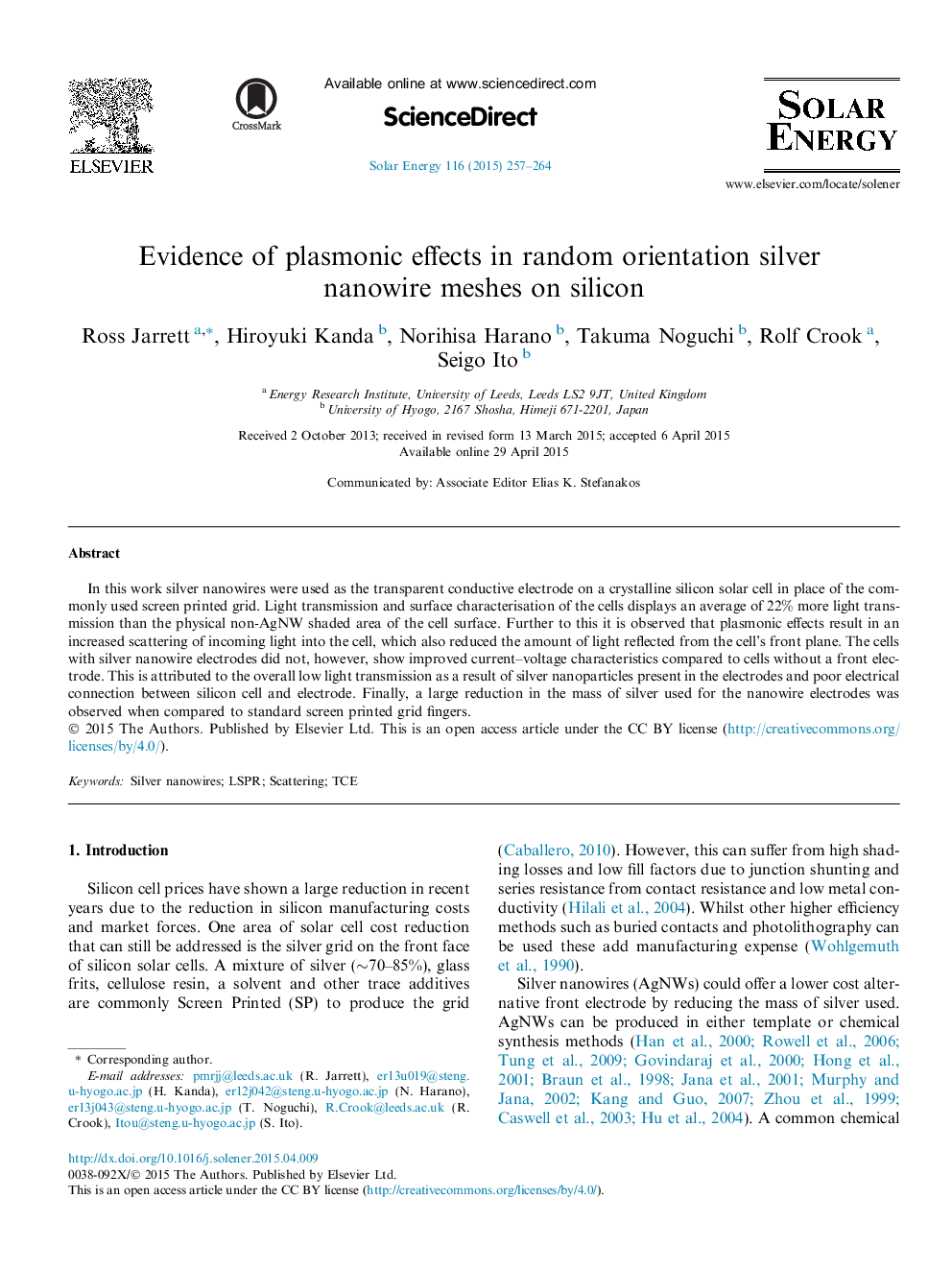| Article ID | Journal | Published Year | Pages | File Type |
|---|---|---|---|---|
| 7937866 | Solar Energy | 2015 | 8 Pages |
Abstract
In this work silver nanowires were used as the transparent conductive electrode on a crystalline silicon solar cell in place of the commonly used screen printed grid. Light transmission and surface characterisation of the cells displays an average of 22% more light transmission than the physical non-AgNW shaded area of the cell surface. Further to this it is observed that plasmonic effects result in an increased scattering of incoming light into the cell, which also reduced the amount of light reflected from the cell's front plane. The cells with silver nanowire electrodes did not, however, show improved current-voltage characteristics compared to cells without a front electrode. This is attributed to the overall low light transmission as a result of silver nanoparticles present in the electrodes and poor electrical connection between silicon cell and electrode. Finally, a large reduction in the mass of silver used for the nanowire electrodes was observed when compared to standard screen printed grid fingers.
Keywords
Related Topics
Physical Sciences and Engineering
Energy
Renewable Energy, Sustainability and the Environment
Authors
Ross Jarrett, Hiroyuki Kanda, Norihisa Harano, Takuma Noguchi, Rolf Crook, Seigo Ito,
